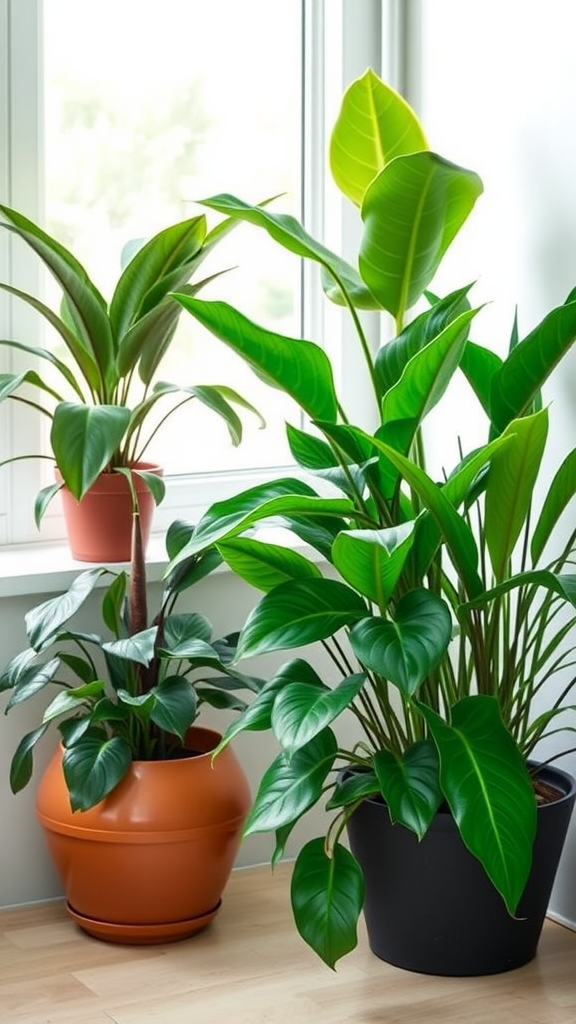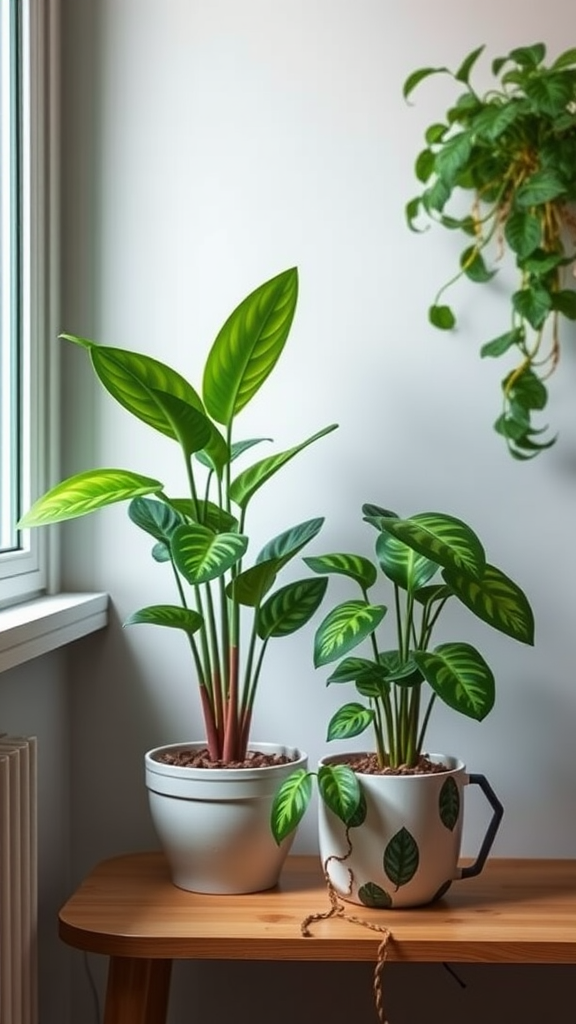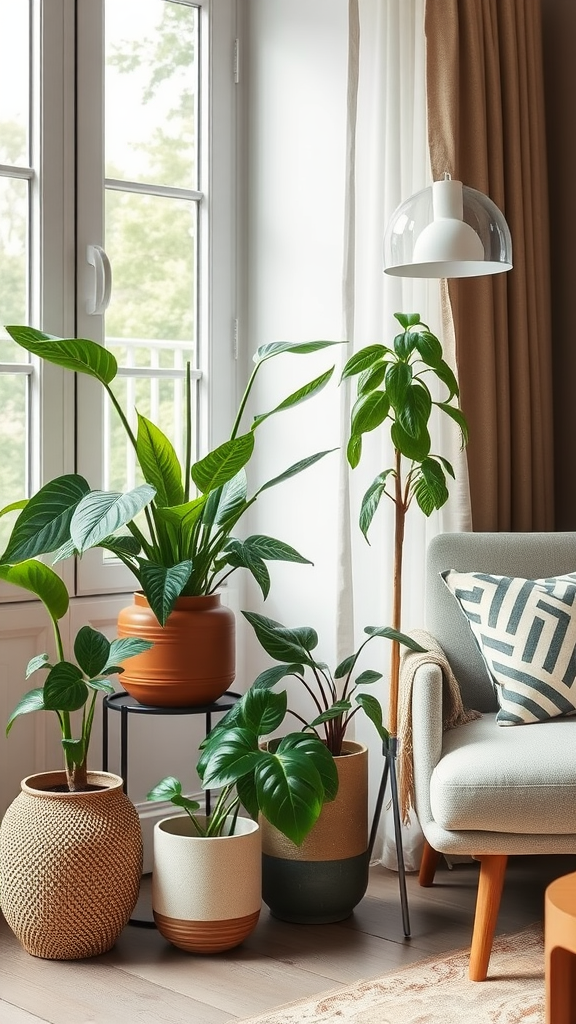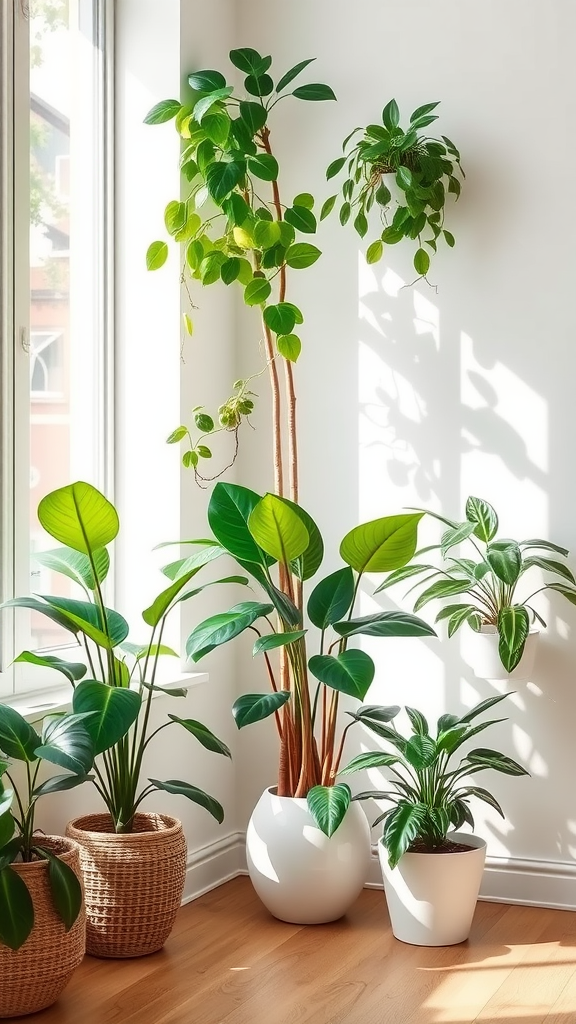The Role of Indoor Plants in Enhancing Health and Happiness
Indoor plants are more than just decorative items for your home or office; they hold incredible potential to enhance your health and happiness. Introducing greenery into your living space can lead to a multitude of benefits that positively impact your overall well-being. Here are ten significant advantages of having indoor plants that boost both health and happiness.
1. Improved Air Quality
One of the most well-known benefits of indoor plants is their ability to purify the air. They absorb carbon dioxide and release oxygen, creating a cleaner environment. Some plants, like spider plants and peace lilies, can also remove harmful toxins such as formaldehyde and benzene from the air. By adding these plants to your home, you significantly enhance indoor air quality, making it safer for you and your family.
2. Enhanced Mood and Happiness
Studies show that being around plants can elevate your mood. Just viewing greenery can trigger feelings of happiness and calmness. When you care for plants, it can also provide a sense of achievement and purpose, leading to increased overall happiness. Whether it’s a flowering plant or lush foliage, the presence of greenery makes a space feel more inviting.
3. Stress Reduction
Indoor plants can significantly reduce stress levels. The act of caring for plants can be therapeutic, lowering blood pressure and anxiety levels. Being surrounded by nature, even indoors, helps create a sense of tranquility, allowing you to unwind and relax after a long day. Some studies suggest that simply being near plants can reduce cortisol levels, the hormone associated with stress.
4. Boosted Productivity
Bringing plants into your workspace can enhance productivity. Research indicates that having greenery around increases focus and efficiency. Plants help create a more pleasant working environment, leading to higher creativity and task performance. Their calming presence mitigates distractions, enabling you to concentrate better on your work.
5. Better Sleep
The presence of certain indoor plants can positively affect your sleep quality. Plants like lavender and jasmine are known for their soothing scents, which can help you relax and prepare for a good night’s sleep. Additionally, having plants in your bedroom can improve air quality, leading to a better rest. A restful night contributes to your overall health and well-being.
6. Increased Humidity
Indoor plants release moisture into the air through a process called transpiration. This increase in humidity can help alleviate dry skin, sore throats, and respiratory issues, especially during the dry winter months. With added humidity, you can maintain better health, particularly for those with allergies or respiratory problems.
7. Enhanced Focus and Creativity
Plants aren’t just beneficial for reducing stress; they can also help spark creativity. Studies have shown that people who work in plant-rich environments tend to think outside the box more effectively than those in less green offices. The refreshing effect of plants helps create a more stimulating atmosphere, making it easier to generate new ideas.
8. Connection to Nature
In today’s fast-paced, urban environments, people often feel disconnected from nature. Indoor plants serve as a reminder of the natural world, helping you cultivate a connection with the earth. This connection can foster a sense of belonging, grounding you in your space, and improving your mood and outlook on life.
9. Encouragement of Mindfulness
Caring for indoor plants requires attention and dedication. This nurturing process encourages mindfulness, as you become more aware of the needs of your plants and their environment. This focused attention can spill over into other areas of your life, enhancing your ability to be present and engaged in the moment.
10. Aesthetic Appeal
Indoor plants add beauty and aesthetic appeal to your space. The visual enhancement provided by greenery can uplift your living or working area, transforming it into a more vibrant environment. A well-decorated space filled with plants not only looks stunning but also contributes to a positive mood and a sense of well-being.
Indoor plants into your space offers numerous advantages for your health and happiness. From purifying air to enhancing mood and productivity, the benefits are substantial. Take the time to choose plants that resonate with you and watch as your space comes alive with color and vibrancy. Bringing a touch of nature indoors can lead to a healthier, happier life.
Practical Tips for Choosing and Caring for Indoor Plants
Bringing indoor plants into your home can be a wonderful way to enhance your living space, but selecting the right plants and taking care of them requires some guidance. Here are some practical tips to help you choose and maintain indoor plants that thrive and beautify your home.
Assess Your Space
Before selecting plants, consider the available space in your home. Think about the following key areas:
- Light Levels: Different plants have varying light requirements. Check how much natural light each room receives throughout the day. Some plants need bright light, while others thrive in low-light conditions.
- Humidity and Temperature: Most indoor plants prefer temperatures between 65°F to 75°F (18°C to 24°C). Also, consider the humidity levels in your home, especially if you live in an area with dry air.
- Available Space: Consider how much space you have available. Some plants grow tall while others spread out. Ensure the plant you choose fits well within your area and won’t crowd your space.
Choose the Right Plants
Once you’ve assessed your space, it’s time to choose your plants. Here are a few popular indoor plants that are relatively easy to care for:
- Snake Plant: Perfect for beginners, snake plants can tolerate low light and infrequent watering.
- Pothos: Known for their trailing vines, pothos thrive in various lighting conditions and are hardy plants.
- Spider Plant: This resilient plant is great for hanging baskets and purifies the air.
- Peace Lily: Besides its beautiful blooms, it grows well in low light and can signal when it needs water by drooping.
Learn About Plant Care
Understanding how to care for your chosen plants is crucial. Here are some essential care tips:
- Watering: Overwatering is a common mistake. Always check the soil moisture before watering. Typically, letting the top inch of soil dry out between waterings works for many plants.
- Fertilizing: During the growing season (spring and summer), use a balanced fertilizer to help your plants grow strong and healthy.
- Pruning: Remove any dead or yellowing leaves regularly. This helps your plant focus its energy on new growth and improves overall appearance.
Monitor for Pests
Indoor plants can sometimes attract pests like spider mites or aphids. Here’s how to keep your plants safe:
- Check Regularly: Look for any signs of pests on the leaves and stems. Early detection is key.
- Use Natural Remedies: If you notice pests, try using a mixture of water and mild soap to spray on affected areas. This often helps eliminate them without harming the plant.
- Isolate Affected Plants: If you find a pest issue, move the affected plant away from your others to prevent the spread.
Provide Proper Light
Indoor plants need adequate light to thrive. Here are a couple of tips on how to meet their light needs:
- Use Grow Lights: If natural light is limited, consider investing in LED grow lights. They can provide the necessary light spectrum for healthy growth.
- Rotate Plants: Regularly rotate your plants every few weeks. This ensures even light exposure on all sides and promotes balanced growth.
Repotting When Necessary
As plants grow, they might require repotting to provide more space for their roots. Here’s what to look for:
- Signs of Root Bound: If roots are coming out of the drainage holes or circling aggressively in the pot, it’s time to repot.
- Choosing a New Pot: Select a pot that is one size larger than the current one. Ensure it has drainage holes to avoid overwatering.
By following these practical tips for selecting and caring for indoor plants, you can create a vibrant and healthy indoor garden. Not only will your space look beautiful, but you’ll also enjoy the benefits of improved air quality and a calming atmosphere.
Conclusion
Indoor plants do more than just beautify your home; they play a vital role in enhancing both your physical health and mental well-being. By improving air quality, reducing stress, and boosting your mood, these green companions create a healthier and happier living environment. The benefits of indoor plants cannot be overstated—they provide a refreshing slice of nature right inside your home, promoting a sense of tranquility and connection to the outdoors.
To fully enjoy the advantages of having indoor plants, it’s essential to approach their selection and care with intention. Consider factors such as the amount of natural light in your space, your lifestyle, and the level of commitment you’re willing to give. Choose plants that resonate with you and match your living conditions. Simple care routines, like regular watering and occasional dusting, can keep your plants thriving and beneficial for years to come.
Creating a green sanctuary in your home is more accessible than it may seem. You don’t need an extensive garden or a green thumb to enjoy the myriad benefits of indoor plants. Even a few small, well-chosen plants can transform your space and uplift your mood. So take a moment to find the perfect plants for your home, and begin your journey towards enhanced health and happiness. Embrace the therapeutic power of greenery, and watch how these vibrant additions can significantly enrich your daily life.




